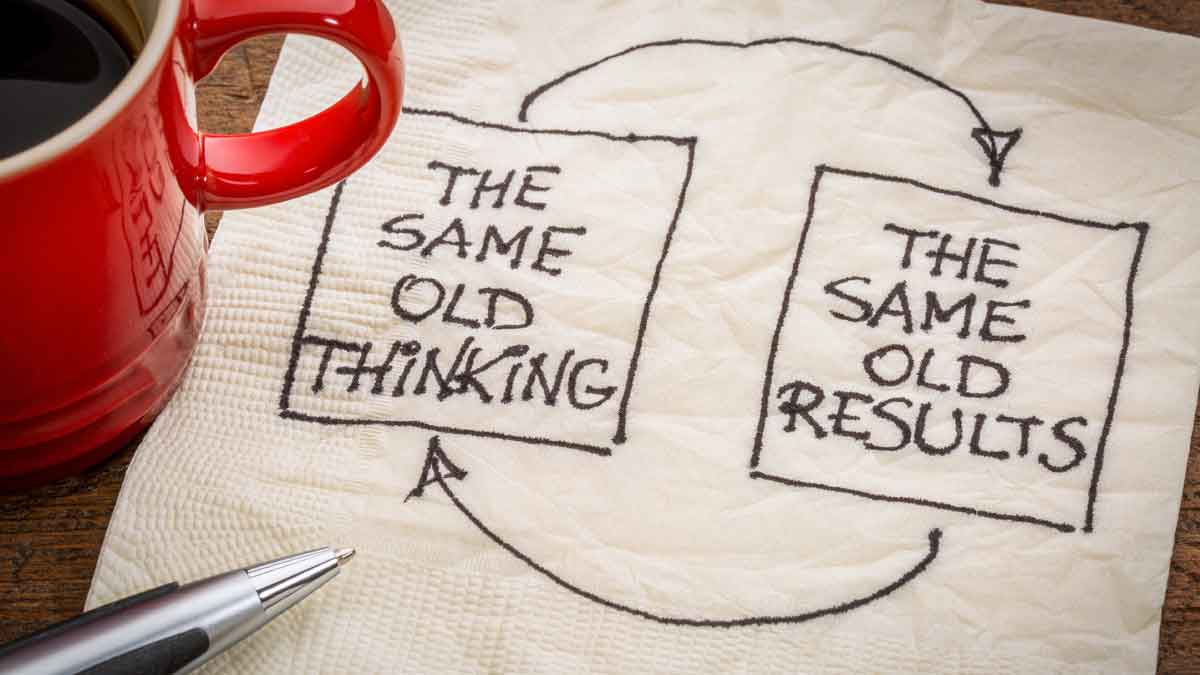The human brain likes to diverge first (look at all these deserts), and then converge (the chocolate lava cake, please). We shortcut this highly-effective approach when we begin by asking customers if they like our idea, hypothesis, or prototype. First, diverge with an open-minded exploration of all customer needs in B2B-optimized, voice-of-customer interviews. When you converge in a later round of interviews, do so quantitatively, so your confirmation bias doesn’t kick in.
More in e-book, Leader’s Guide to B2B Organic Growth (Lesson 16).
How about knowing their response before they see it? B2B customers are so knowledgeable that you can model their behavior based on what you learn in customer interviews. Prototypes are still worthwhile—for refinement and engagement. But they’re far too expensive and time-consuming if you do them before conducting insightful B2B customer interviews.
More in article, How to model customer needs
A new product development process with stages and gates provides helpful discipline. But most suffer from two limitations: 1) Internal focus… talking to ourselves instead of customers. 2) Analytical thinking… promoting a checklist mentality. You also need discovery thinking, with a focus on learning. Unlike analytical thinking, this is fragile and must be nurtured.
More in article, Should Your Stage-Gate® Get a No-Go?
Neither will customers pay you for a product they don’t need. I call this new-product failure mode, “Nice shot, wrong target.” It is far too common. Most customers really do have something “broken” that needs fixed. Figure out what this is before you design your next new product, and they’ll pay you handsomely.
More in New Product Blueprinting article, Are You Maximizing Your Profits?
Some products deliver enormous profits for decades, carrying whole businesses and careers on their sturdy shoulders. And then there are the tired, the poor, the huddled masses of wretched new products you wish were on your competitors’ teeming shores. You’ll find the blockbusters always satisfy six conditions. (See link below for details.)
More in article, Are You Maximizing Your Profits?
One is throwing more money at R&D in a Soviet-style arms race. Another is exhorting the troops to do better. An all-time favorite is asking tough project-review questions… but not training teams in the skills needed to find the answers. What if all your teams had the highest possible skills in understanding customer needs? Might this work better?
More in article, Do You Really Interview Customers?
Ever watch stage-gate reviews or entire workshops wrestling with The Value Proposition? It’s not pretty. In my experience, good B2B customer interviews yield potential value propositions like so many ripe apples falling from a tree. You just need to pick which to pursue. If you have to dream them up, you’re climbing the wrong tree.
More in article, Three Steps to Unbeatable Value Propositions (Originally published in B2B Organic Growth newsletter).
Technology development is science-facing and converts money into knowledge. Product development is market-facing and converts knowledge back into money. Both are critical, but don’t confuse them. And never do any product development until you have quantified, unbiased, unfiltered data on customer needs.
More in white paper, Timing is Everything (page 6).
If your new product development process does not require customer interviews today, consider two questions: 1) Do I have competitors beating me to the new product punch because they are using such interviews to uncover market needs? 2) Could I leapfrog them by building a company-wide competency of B2B-optimized interviews?
More in article, B2B Customer Interviews: Are They Different?
Three conditions must be met: 1) A market segment (cluster of customers with similar needs) is clearly defined. 2) The segment is worth winning in terms of size, growth, profit potential, etc. 3) The segment is winnable, i.e., it’s not defended by a well-entrenched competitor. Overlook these conditions and you’ll waste resources.
Read more in article, B2B Customer Interviews: Are They Different? (Originally published in B2B Organic Growth.) If you are using a one-size-fits-all VOC interviews for industrial goods that others use for consumer goods, you’re sub-optimizing. Collaboration, pre-selling and value capture are wonderful goals, but to reach them you’ll need new approaches.
Picture this: A customer tells your sales rep what they want, who hands it off to your R&D. This clever customer tells your competitors the same thing. Terrific. If more than one supplier crosses the finish line, you can forget any price premium. Try this: You choose the race conditions by targeting an attractive market, and exploring its needs better than competitors.
More in article, Are You Squandering R&D Resources?











